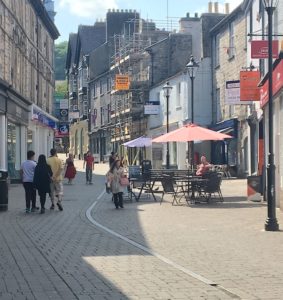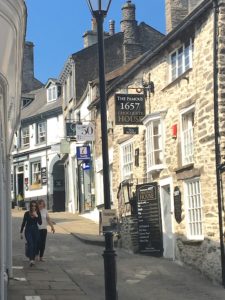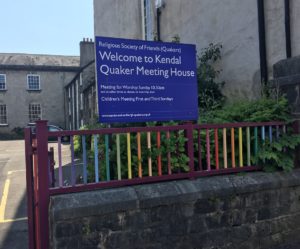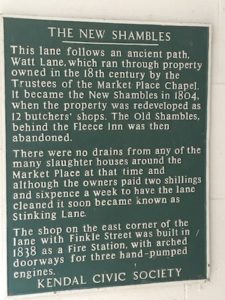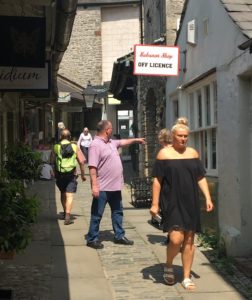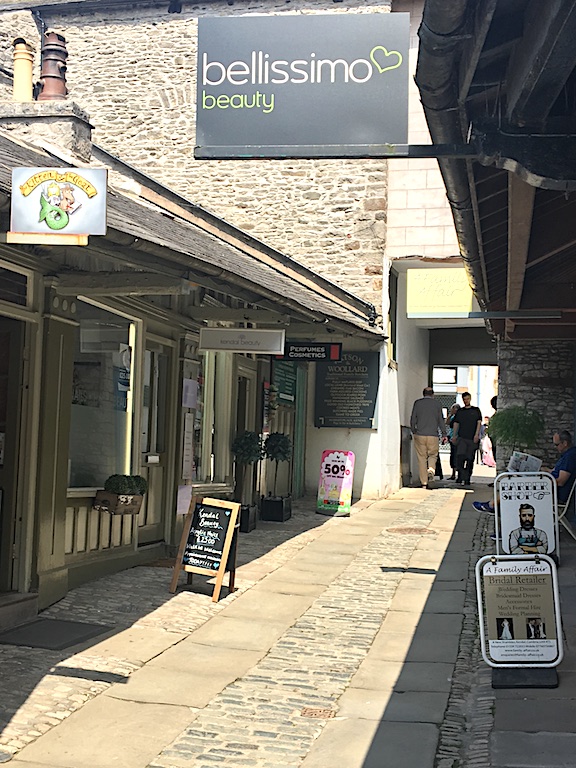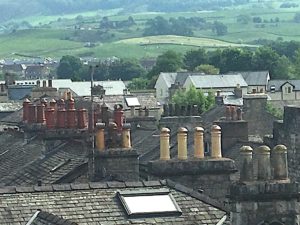
Kendal rooftops from our hotel. Many buildings are from past centuries when multiple fireplaces meant multiple chimneys.
We chose to visit Kendal because it is a good entry point to the Lakes District without being as tourist-centric as many of the better known towns (Ambleside, Windemere, Bowness, etc). It has proved a worthy choice with lots of historical interest, lively streets and an workaday English vibe. While tourist buses pass through town or stop for an overnight, Kendal doesn’t feel beset by visitors (to this visitor!).
Kendal is a “market town” on the River Kent, often known as the “Gateway to the Lakes [District].” Its origins go back to 100 AD with the founding of a Roman fort in the area. Normans succeeded the Romans around 700 AD, and Kendal found its way onto the English map when the Edward I, needing Crusades cash, granted a market charter in 1189 AD.
Kendal came into its own as a trading town in the 1400’s due to its geographical position at the center of the Westmorland wool industry, and its rough sturdy wool became famous as “Kendal Green”–even making its way over the Atlantic with early American settlers.
Quakers and Methodists came to Kendal in the late 1600’s, eventually giving rise to tolerance, improved political life and new economies such as banking, leather-tanning, shoe-making and water turbines. Today Kendal remains a market town for the area, and adds tourism to its economic profile.
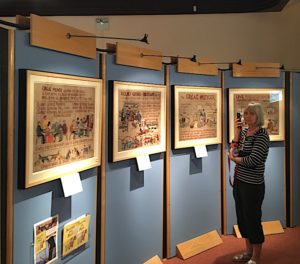
The Quaker Tapestry, a 10 year project centered in Kendal, recounts Quaker history and values. It is made of squares composed by Quaker groups from all over the world.
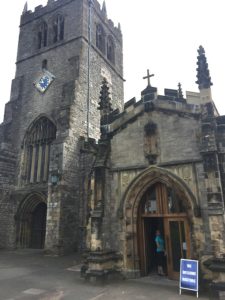
Kendal Parish Church, built around 1200 AD as a Catholic cathedral before converting to Anglicanism under Henry VIII.
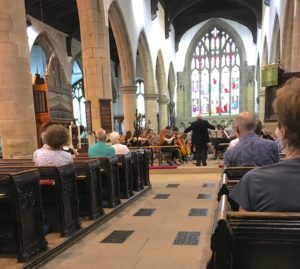
We attended a Glasgow University Chamber Group symphony in Kendal Parish Church on Thursday night–two pop music fans’ annual contribution to classical music.




